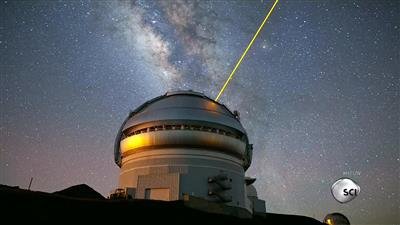
Ep 9. The Search for Second Earth
- September 3, 2014
- 42 min
-
8.7 (104)
The Search for Second Earth is the ninth episode of season three of How the Universe Works, a documentary series that explores the wonders of space and our understanding of the universe. In this episode, the focus is on the search for habitable planets outside our solar system.
The episode begins with an explanation of the factors that make Earth hospitable for life, such as its distance from the sun, atmosphere, and magnetic field. Scientists have long pondered the possibility of other planets outside our solar system that could support life, or second Earths.
The episode delves into the different methods scientists use to detect exoplanets, planets outside our solar system. One of these methods is the transit method, which involves looking for dips in a star's brightness that could be caused by a planet passing in front of it. Another method is the radial velocity method, which measures the movement of the star as it is affected by the gravitational pull of its planets.
The episode features interviews with several astronomers who have made significant discoveries in the search for exoplanets, including Sara Seager, who is known as the "pioneer of exoplanet atmospheres," and Geoff Marcy, who has discovered more exoplanets than anyone else. They discuss the challenges of detecting exoplanets, such as the difficulty of distinguishing between a planet and a star, and the limited amount of time they have to observe a star for signs of a planet.
The episode also explores the properties of different types of exoplanets, including "hot Jupiters," gas giants that are much closer to their stars than Jupiter is to the sun, and "super-Earths," which are rocky planets that are larger than Earth but smaller than Neptune. The most promising exoplanets for supporting life are those that are similar in size and composition to Earth and are located in the habitable zone of their star, where temperatures are just right for liquid water to exist.
The episode discusses the discovery of the first confirmed exoplanet, 51 Pegasi b, which was detected in 1995 by Swiss astronomers using the radial velocity method. Since then, the number of confirmed exoplanets has grown exponentially, and new discoveries are being made all the time. The Kepler space telescope, which launched in 2009, has been particularly instrumental in the search for exoplanets, having discovered over 2,600 exoplanet candidates.
The episode also touches on the possibility of life existing on exoplanets. While scientists have not yet found definitive evidence of extraterrestrial life, they are hopeful that they will in the near future. The discovery of microbial life on a nearby exoplanet would have profound implications for our understanding of the universe and our place in it.
The Search for Second Earth is a fascinating exploration of the search for habitable exoplanets and the methods scientists use to detect them. The episode is filled with stunning visuals of distant stars and planets, and features interviews with some of the leading experts in the field. It is a must-watch for anyone who is interested in the search for extraterrestrial life and our understanding of the universe.
